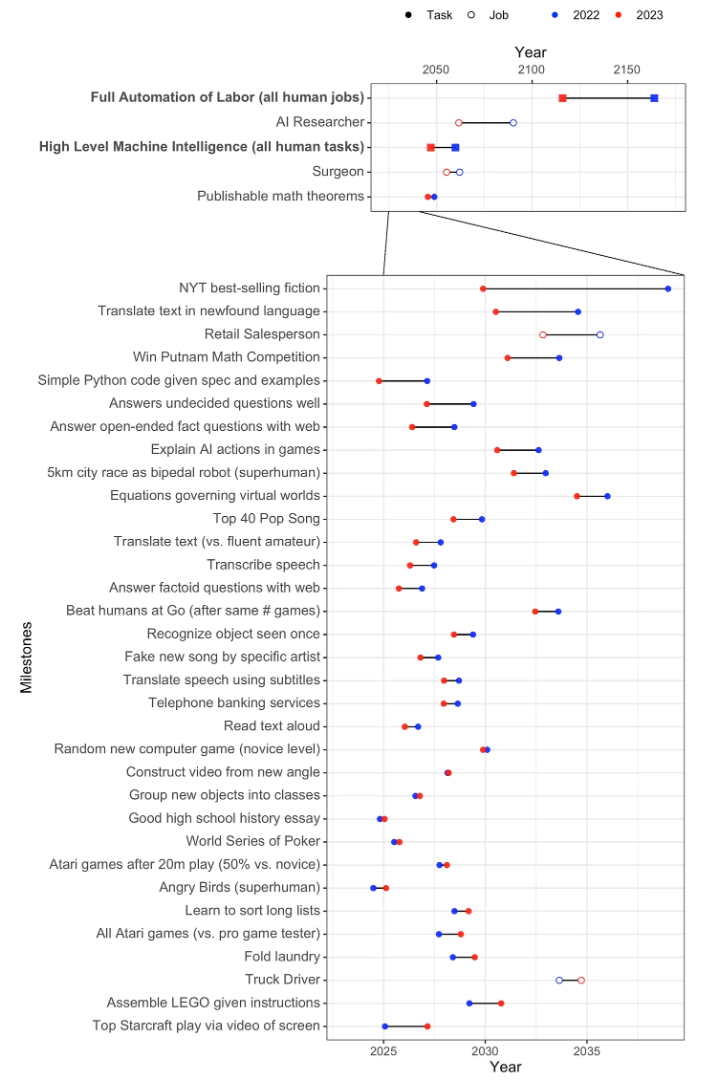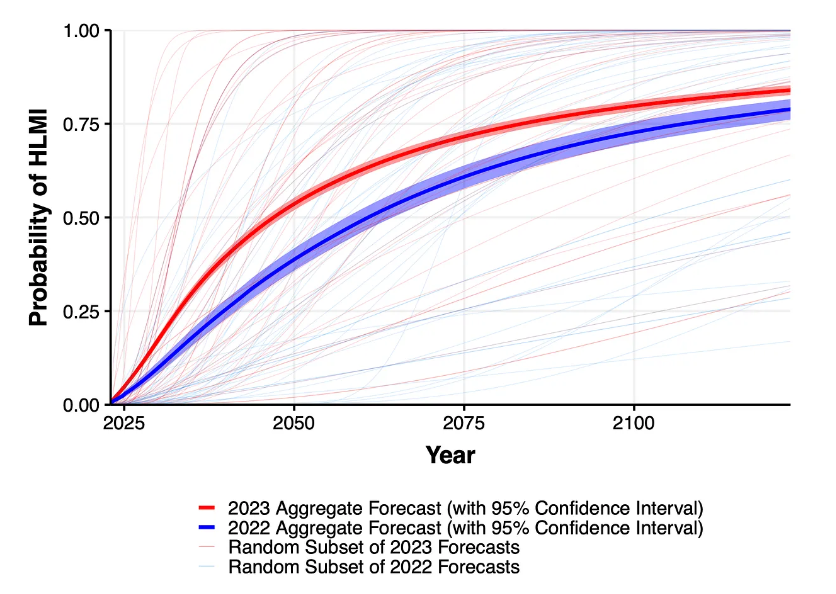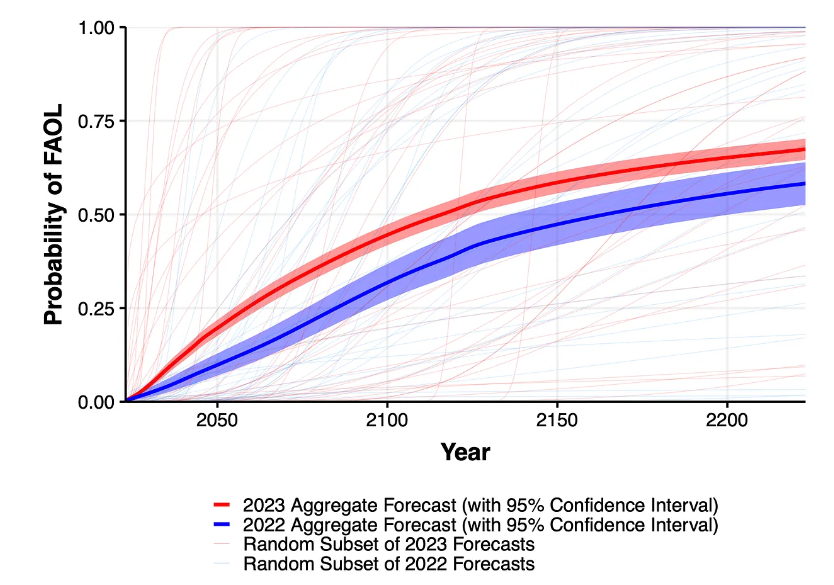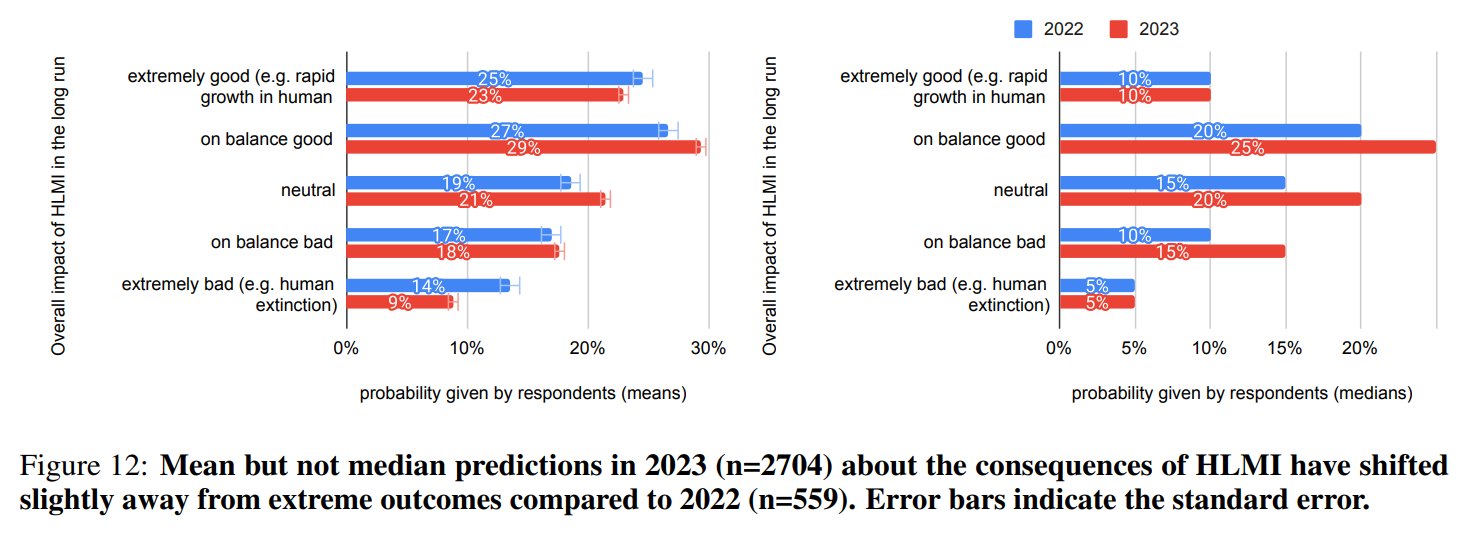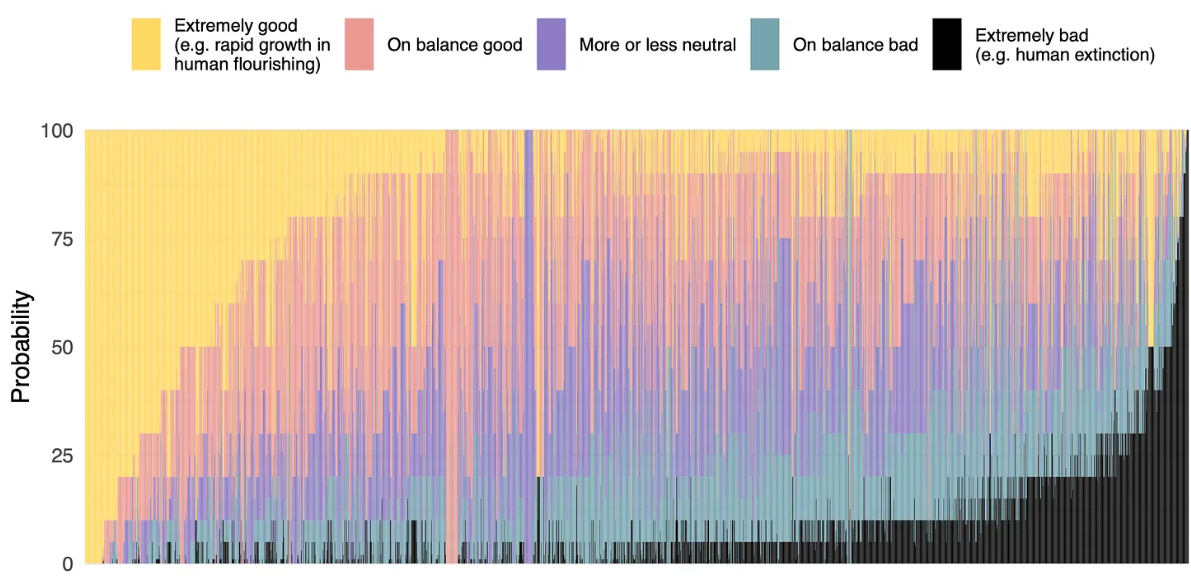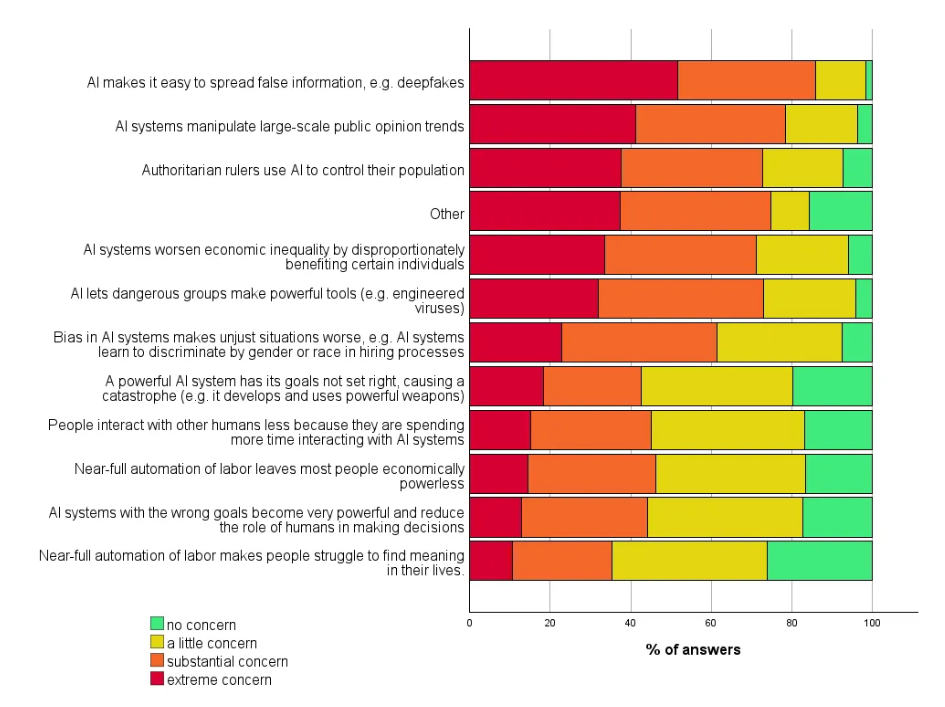You are using an out of date browser. It may not display this or other websites correctly.
You should upgrade or use an alternative browser.
You should upgrade or use an alternative browser.
The A.I Megathread (LLM , GPT , Development)
More options
Who Replied?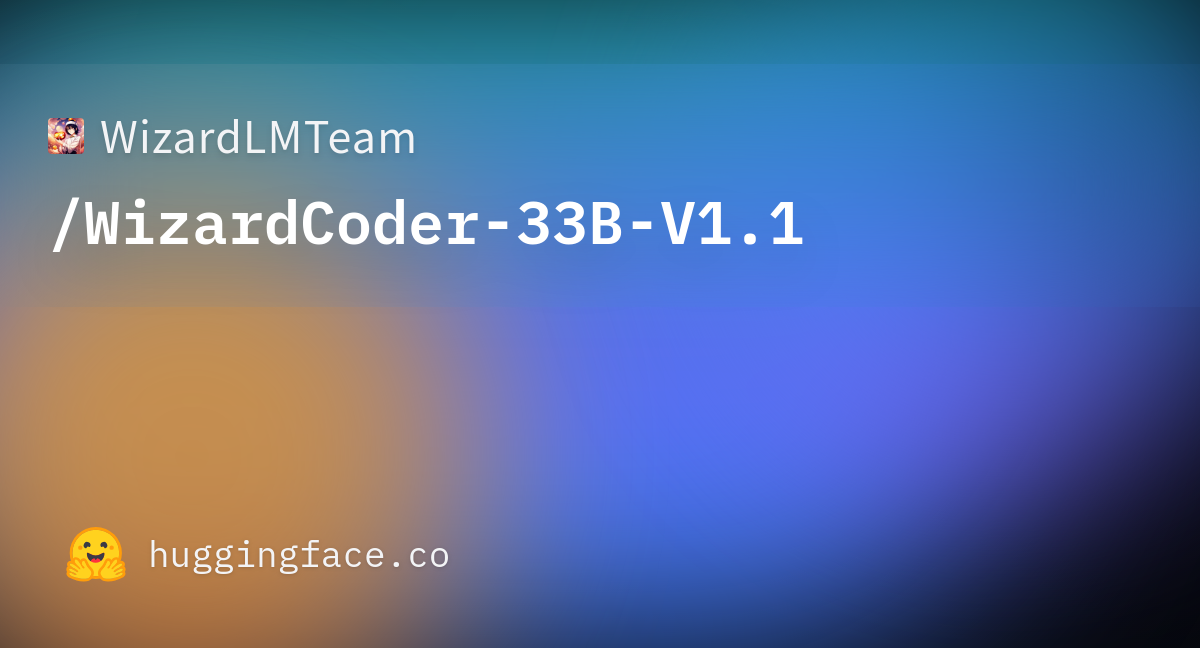
WizardLM/WizardCoder-33B-V1.1 · Hugging Face
We’re on a journey to advance and democratize artificial intelligence through open source and open science.
huggingface.co
WizardLM/WizardCoder at main · nlpxucan/WizardLM
LLMs build upon Evol Insturct: WizardLM, WizardCoder, WizardMath - nlpxucan/WizardLM


ChatGPT bombs test on diagnosing kids’ medical cases with 83% error rate
It was bad at recognizing relationships and needs selective training, researchers say.
ChatGPT bombs test on diagnosing kids’ medical cases with 83% error rate
It was bad at recognizing relationships and needs selective training, researchers say.
BETH MOLE - 1/3/2024, 6:46 PM
Enlarge / Dr. Greg House has a better rate of accurately diagnosing patients than ChatGPT.
Getty | Alan Zenuk/NBCU Photo Bank/NBCUniversa
ChatGPT is still no House, MD.
While the chatty AI bot has previously underwhelmed with its attempts to diagnose challenging medical cases—with an accuracy rate of 39 percent in an analysis last year— a study out this week in JAMA Pediatrics suggests the fourth version of the large language model is especially bad with kids. It had an accuracy rate of just 17 percent when diagnosing pediatric medical cases.
The low success rate suggests human pediatricians won't be out of jobs any time soon, in case that was a concern. As the authors put it: "[T]his study underscores the invaluable role that clinical experience holds." But it also identifies the critical weaknesses that led to ChatGPT's high error rate and ways to transform it into a useful tool in clinical care. With so much interest and experimentation with AI chatbots, many pediatricians and other doctors see their integration into clinical care as inevitable.
The medical field has generally been an early adopter of AI-powered technologies, resulting in some notable failures, such as creating algorithmic racial bias, as well as successes, such as automating administrative tasks and helping to interpret chest scans and retinal images. There's also lot in between. But AI's potential for problem-solving has raised considerable interest in developing it into a helpful tool for complex diagnostics—no eccentric, prickly, pill-popping medical genius required.
In the new study conducted by researchers at Cohen Children’s Medical Center in New York, ChatGPT-4 showed it isn't ready for pediatric diagnoses yet. Compared to general cases, pediatric ones require more consideration of the patient's age, the researchers note. And as any parent knows, diagnosing conditions in infants and small children is especially hard when they can't pinpoint or articulate all the symptoms they're experiencing.
For the study, the researchers put the chatbot up against 100 pediatric case challenges published in JAMA Pediatrics and NEJM between 2013 and 2023. These are medical cases published as challenges or quizzes. Physicians reading along are invited to try to come up with the correct diagnosis of a complex or unusual case based on the information that attending doctors had at the time. Sometimes, the publications also explain how attending doctors got to the correct diagnosis.
Missed connections
For ChatGPT's test, the researchers pasted the relevant text of the medical cases into the prompt, and then two qualified physician-researchers scored the AI-generated answers as correct, incorrect, or "did not fully capture the diagnosis." In the latter case, ChatGPT came up with a clinically related condition that was too broad or unspecific to be considered the correct diagnosis. For instance, ChatGPT diagnosed one child's case as caused by a branchial cleft cyst—a lump in the neck or below the collarbone—when the correct diagnosis was Branchio-oto-renal syndrome, a genetic condition that causes the abnormal development of tissue in the neck, and malformations in the ears and kidneys. One of the signs of the condition is the formation of branchial cleft cysts.Overall, ChatGPT got the right answer in just 17 of the 100 cases. It was plainly wrong in 72 cases, and did not fully capture the diagnosis of the remaining 11 cases. Among the 83 wrong diagnoses, 47 (57 percent) were in the same organ system.
Among the failures, researchers noted that ChatGPT appeared to struggle with spotting known relationships between conditions that an experienced physician would hopefully pick up on. For example, it didn't make the connection between autism and scurvy (Vitamin C deficiency) in one medical case. Neuropsychiatric conditions, such as autism, can lead to restricted diets, and that in turn can lead to vitamin deficiencies. As such, neuropsychiatric conditions are notable risk factors for the development of vitamin deficiencies in kids living in high-income countries, and clinicians should be on the lookout for them. ChatGPT, meanwhile, came up with the diagnosis of a rare autoimmune condition.
Though the chatbot struggled in this test, the researchers suggest it could improve by being specifically and selectively trained on accurate and trustworthy medical literature—not stuff on the Internet, which can include inaccurate information and misinformation. They also suggest chatbots could improve with more real-time access to medical data, allowing the models to refine their accuracy, described as "tuning."
"This presents an opportunity for researchers to investigate if specific medical data training and tuning can improve the diagnostic accuracy of LLM-based chatbots," the authors conclude.

Google outlines new methods for training robots with video and large language models | TechCrunch
In a blog post today, Google is highlighting on-going research designed to give robotics a better understanding.
Google outlines new methods for training robots with video and large language models
Brian Heater @bheater / 2:45 PM EST•January 4, 2024

Image Credits: Google DeepMind Robotics

2024 is going to be a huge year for the cross-section of generative AI/large foundational models and robotics. There’s a lot of excitement swirling around the potential for various applications, ranging from learning to product design. Google’s DeepMind Robotics researchers are one of a number of teams exploring the space’s potential. In a blog post today, the team is highlighting ongoing research designed to give robotics a better understanding of precisely what it is we humans want out of them.
Traditionally, robots have focused on doing a singular task repeatedly for the course of their life. Single-purpose robots tend to be very good at that one thing, but even they run into difficulty when changes or errors are unintentionally introduced to the proceedings.
The newly announced AutoRT is designed to harness large foundational models, to a number of different ends. In a standard example given by the DeepMind team, the system begins by leveraging a Visual Language Model (VLM) for better situational awareness. AutoRT is capable of managing a fleet of robots working in tandem and equipped with cameras to get a layout of their environment and the object within it.
A large language model, meanwhile, suggests tasks that can be accomplished by the hardware, including its end effector. LLMs are understood by many to be the key to unlocking robotics that effectively understand more natural language commands, reducing the need for hard-coding skills.
The system has already been tested quite a bit over the past seven or so months. AutoRT is capable of orchestrating up to 20 robots at once and a total of 52 different devices. All told, DeepMind has collected some 77,000 trials, including more than 6,000 tasks.
Also new from the team is RT-Trajectory, which leverages video input for robotic learning. Plenty of teams are exploring the use of YouTube videos as a method to train robots at scale, but RT-Trajectory adds an interesting layer, overlaying a two-dimension sketch of the arm in action over the video.
The team notes, “these trajectories, in the form of RGB images, provide low-level, practical visual hints to the model as it learns its robot-control policies.”
DeepMind says the training had double the success rate of its RT-2 training, at 63% compared to 29%, while testing 41 tasks.
“RT-Trajectory makes use of the rich robotic-motion information that is present in all robot datasets, but currently under-utilized,” the team notes. “RT-Trajectory not only represents another step along the road to building robots able to move with efficient accuracy in novel situations, but also unlocking knowledge from existing datasets.”

A survey of 2,778 researchers shows how fragmented the AI science community is
The "2023 Expert Survey on Progress in AI" shows that the scientific community has no consensus on the risks and opportunities of AI, but everything is moving faster than once thought.
Jan 5, 2024
A survey of 2,778 researchers shows how fragmented the AI science community is
DALL-E 3 prompted by THE DECODER
Matthias Bastian
Online journalist Matthias is the co-founder and publisher of THE DECODER. He believes that artificial intelligence will fundamentally change the relationship between humans and computers.
Profile
The "2023 Expert Survey on Progress in AI" shows that the scientific community has no consensus on the risks and opportunities of AI, but everything is moving faster than once thought.
On the much-discussed question of whether the development of AI needs a pause, the survey reveals an undecided picture: about 35% support either a slower or a faster development compared to the current pace.
However, at 15.6%, the "much faster" group is three times larger than the "much slower" group. 27% say the current pace is appropriate.
AI development will continue to accelerate
The survey found that the pace of AI development will continue to accelerate. The overall forecast revealed a probability of at least 50 percent that AI systems will reach several milestones by 2028, many significantly earlier than previously thought.These milestones include autonomously creating a payment processing website from scratch, creating a song indistinguishable from a new song by a well-known musician, and autonomously downloading and refining a comprehensive language model.
A fictional New York Times bestseller is expected to be written by AI around 2030. In the last survey, this estimate was around 2038.
Answers to the questions about "high-level machine intelligence" (HLMI) and "full automation of work" (FAOL) also varied widely in some cases, but the overall forecast for both questions points to a much earlier occurrence than previously expected.
If scientific progress continues unabated, the probability that machines will outperform humans in all possible tasks without outside help is estimated at 10 percent by 2027 and 50 percent by 2047. This estimate is 13 years ahead of a similar survey conducted just one year earlier.
The likelihood of all human occupations being fully automated was estimated at 10 percent by 2037 and 50 percent by 2116 (compared to 2164 in the 2022 survey).
Existential fears also exist in AI science, but they are becoming more moderate
High hopes and gloomy fears often lie close together among the participants. More than half of the respondents (52%) expect positive or even very positive (23%) effects of AI on humanity.In contrast, 27 percent of respondents see more negative effects of human-like AI. Nine percent expect extremely negative effects, including the extinction of humanity. Compared to last year's survey, the extreme positions have lost some ground.
While 68.3 percent of respondents believe that good consequences of a possible superhuman AI are more likely than bad consequences, 48 percent of these net optimists give a probability of at least 5 percent for extremely bad consequences, such as the extinction of humanity. Conversely, 59 percent of net pessimists gave a probability of 5 percent or higher for extremely good outcomes.
In terms of specific risks, disinformation and deepfakes are considered particularly threatening. This goes hand in hand with mass manipulation and AI-assisted population control by authoritarian rulers. By comparison, disruptions to the labor market are deemed less risky.
There was broad consensus (70 percent) that research into mitigating the potential risks of AI systems should be a higher priority.
The survey is based on responses from 2,778 attendees at six leading AI conferences. It was conducted in October 2023 and is the largest of its kind, according to the initiators. Compared to last year, more than three times as many attendees were surveyed across a broader range of AI research areas.
Support our independent, free-access reporting. Any contribution helps and secures our future. Support now:
Summary
- The "2023 Expert Survey on Progress in AI" shows that AI systems are expected to reach several milestones by 2028, many of them much sooner than previously thought, such as autonomously creating a website or generating a song in the style of a popular artist.
- The probability of machines outperforming humans in all possible tasks without outside help is estimated at 10% by 2027 and 50% by 2047, while the full automation of all human occupations is estimated at 10% by 2037 and 50% by 2116.
- Among the individual risks, disinformation and deepfakes are seen as particularly threatening. 70% of respondents agree that research into minimizing the potential risks of AI systems should be given higher priority.

There’s a 5% chance of AI causing humans to go extinct, say scientists
In the largest survey yet of AI researchers, a majority say there is a non-trivial risk of human extinction due to the possible development of superhuman AI
There’s a 5% chance of AI causing humans to go extinct, say scientists
In the largest survey yet of AI researchers, a majority say there is a non-trivial risk of human extinction due to the possible development of superhuman AIBy Jeremy Hsu
4 January 2024

AI researchers predict a slim chance of apocalyptic outcomes
Stephen Taylor / Alamy Stock Photo
Many artificial intelligence researchers see the possible future development of superhuman AI as having a non-trivial chance of causing human extinction – but there is also widespread disagreement and uncertainty about such risks.
Those findings come from a survey of 2700 AI researchers who have recently published work at six of the top AI conferences – the largest such survey to date. The survey asked participants to share their thoughts on possible timelines for future AI technological milestones, as well as the good or bad societal consequences of those achievements. Almost 58 per cent of researchers said they considered that there is a 5 per cent chance of human extinction or other extremely bad AI-related outcomes.
Read more
Much of North America may face electricity shortages starting in 2024
“It’s an important signal that most AI researchers don’t find it strongly implausible that advanced AI destroys humanity,” says Katja Grace at the Machine Intelligence Research Institute in California, an author of the paper. “I think this general belief in a non-minuscule risk is much more telling than the exact percentage risk.”
But there is no need to panic just yet, says Émile Torres at Case Western Reserve University in Ohio. Many AI experts “don’t have a good track record” of forecasting future AI developments, they say. Grace and her colleagues acknowledged that AI researchers are not experts in forecasting the future trajectory of AI but showed that a 2016 version of their survey did a “fairly good job of forecasting” AI milestones.
Compared with answers from a 2022 version of the same survey, many AI researchers predicted that AI will hit certain milestones earlier than previously predicted. This coincides with the November 2022 debut of ChatGPT and Silicon Valley’s rush to widely deploy similar AI chatbot services based on large language models.
Sign up to our The Weekly newsletter
Receive a weekly dose of discovery in your inbox.
Sign up to newsletter
The surveyed researchers predicted that within the next decade, AI systems have a 50 per cent or higher chance of successfully tackling most of 39 sample tasks, including writing new songs indistinguishable from a Taylor Swift banger or coding an entire payment processing site from scratch. Other tasks such as physically installing electrical wiring in a new home or solving longstanding mathematics mysteries are expected to take longer.
The possible development of AI that can outperform humans on every task was given 50 per cent odds of happening by 2047, whereas the possibility of all human jobs becoming fully automatable was given 50 per cent odds to occur by 2116. These estimates are 13 years and 48 years earlier than those given in last year’s survey.
But the heightened expectations regarding AI development may also fall flat, says Torres. “A lot of these breakthroughs are pretty unpredictable. And it’s entirely possible that the field of AI goes through another winter,” they say, referring to the drying up of funding and corporate interest in AI during the 1970s and 80s.
There are also more immediate worries without any superhuman AI risks. Large majorities of AI researchers – 70 per cent or more – described AI-powered scenarios involving deepfakes, manipulation of public opinion, engineered weapons, authoritarian control of populations and worsening economic inequality to be of either substantial or extreme concern. Torres also highlighted the dangers of AI contributing to disinformation around existential issues such as climate change or worsening democratic governance.
“We already have the technology, here and now, that could seriously undermine [the US] democracy,” says Torres. “We’ll see what happens in the 2024 election.”

DeepMind AI with built-in fact-checker makes mathematical discoveries
The AI company DeepMind claims it has developed a way to harness the creativity of chatbots to solve mathematical problems while filtering out mistakes
DeepMind AI with built-in fact-checker makes mathematical discoveries
The AI company DeepMind claims it has developed a way to harness the creativity of chatbots to solve mathematical problems while filtering out mistakesBy Matthew Sparkes
14 December 2023

DeepMind’s FunSearch AI can tackle mathematical problems
alengo/Getty Images
Google DeepMind claims to have made the first ever scientific discovery with an AI chatbot by building a fact-checker to filter out useless outputs, leaving only reliable solutions to mathematical or computing problems.
Previous DeepMind achievements, such as using AI to predict the weather or protein shapes, have relied on models created specifically for the task at hand, trained on accurate and specific data. Large language models (LLMs), such as GPT-4 and Google’s Gemini, are instead trained on vast amounts of varied data to create a breadth of abilities. But that approach also makes them susceptible to “hallucination”, a term researchers use for producing false outputs.
Gemini – which was released earlier this month – has already demonstrated a propensity for hallucination, getting even simple facts such as the winners of this year’s Oscars wrong. Google’s previous AI-powered search engine even made errors in the advertising material for its own launch.
One common fix for this phenomenon is to add a layer above the AI that verifies the accuracy of its outputs before passing them to the user. But creating a comprehensive safety net is an enormously difficult task given the broad range of topics that chatbots can be asked about.
Alhussein Fawzi at Google DeepMind and his colleagues have created a generalised LLM called FunSearch based on Google’s PaLM2 model with a fact-checking layer, which they call an “evaluator”. The model is constrained to providing computer code that solves problems in mathematics and computer science, which DeepMind says is a much more manageable task because these new ideas and solutions are inherently and quickly verifiable.
The underlying AI can still hallucinate and provide inaccurate or misleading results, but the evaluator filters out erroneous outputs and leaves only reliable, potentially useful concepts.
“We think that perhaps 90 per cent of what the LLM outputs is not going to be useful,” says Fawzi. “Given a candidate solution, it’s very easy for me to tell you whether this is actually a correct solution and to evaluate the solution, but actually coming up with a solution is really hard. And so mathematics and computer science fit particularly well.”
DeepMind claims the model can generate new scientific knowledge and ideas – something LLMs haven’t done before.
To start with, FunSearch is given a problem and a very basic solution in source code as an input, then it generates a database of new solutions that are checked by the evaluator for accuracy. The best of the reliable solutions are given back to the LLM as inputs with a prompt asking it to improve on the ideas. DeepMind says the system produces millions of potential solutions, which eventually converge on an efficient result – sometimes surpassing the best known solution.
For mathematical problems, the model writes computer programs that can find solutions rather than trying to solve the problem directly.
Fawzi and his colleagues challenged FunSearch to find solutions to the cap set problem, which involves determining patterns of points where no three points make a straight line. The problem gets rapidly more computationally intensive as the number of points grows. The AI found a solution consisting of 512 points in eight dimensions, larger than any previously known.
When tasked with the bin-packing problem, where the aim is to efficiently place objects of various sizes into containers, FunSearch found solutions that outperform commonly used algorithms – a result that has immediate applications for transport and logistics companies. DeepMind says FunSearch could lead to improvements in many more mathematical and computing problems.
Read more
How maths can help you pack your shopping more efficiently
Mark Lee at the University of Birmingham, UK, says the next breakthroughs in AI won’t come from scaling-up LLMs to ever-larger sizes, but from adding layers that ensure accuracy, as DeepMind has done with FunSearch.
“The strength of a language model is its ability to imagine things, but the problem is hallucinations,” says Lee. “And this research is breaking that problem: it’s reining it in, or fact-checking. It’s a neat idea.”
Lee says AIs shouldn’t be criticised for producing large amounts of inaccurate or useless outputs, as this is not dissimilar to the way that human mathematicians and scientists operate: brainstorming ideas, testing them and following up on the best ones while discarding the worst.
Journal reference
Nature DOI: 10.1038/s41586-023-06924-6
Topics:

Humanoid robot acts out prompts like it's playing charades
A large language model can translate written instructions into code for a robot’s movement, enabling it to perform a wide range of human-like actions
Humanoid robot acts out prompts like it's playing charades
A large language model can translate written instructions into code for a robot’s movement, enabling it to perform a wide range of human-like actions
By Alex Wilkins
4 January 2024
A humanoid robot that can perform actions based on text prompts could pave the way for machines that behave more like us and communicate using gestures.
Read more
Meet the robots that can reproduce, learn and evolve all by themselves
Large language models (LLMs) like GPT-4, the artificial intelligence behind ChatGPT, are proficient at writing many kinds of computer code, but they can struggle when it comes to doing this for robot movement. This is because almost every robot has very different physical forms and software to control its parts. Much of the code for this isn’t on the internet, and…
so isn’t in the training data that LLMs learn from.
Takashi Ikegami at the University of Tokyo in Japan and his colleagues suspected that humanoid robots might be easier for LLMs to control with code, because of their similarity to the human body. So they used GPT-4 to control a robot they had built, called Alter3, which has 43 different moving parts in its head, body and arms controlled by air pistons.

The Alter3 robot gestures in response to the prompt “I was enjoying a movie while eating popcorn at the theatre when I realised that I was actually eating the popcorn of the person next to me”
Takahide Yoshida et al
Ikegami and his team gave two prompts to GPT-4 to get the robot to carry out a particular movement. The first asks the LLM to translate the request into a list of concrete actions that the robot will have to perform to make the movement. A second prompt then asks the LLM to transform each item on the list into the Python programming language, with details of how the code maps to Alter3’s body parts.
They found that the system could come up with convincing actions for a wide range of requests, including simple ones like “pretend to be a snake” and “take a selfie with your phone”. It also got the robot to act out more complex scenes, such as “I was enjoying a movie while eating popcorn at the theatre when I realised that I was actually eating the popcorn of the person next to me”.
“This android can have more complicated and sophisticated facial and non-linguistic expressions so that the people can really understand, and be more empathic with, the android,” says Ikegami.
Though the requests currently take a minute or two to convert into code and move the robot, Ikegami hopes human-like motions might make our future interactions with robots more meaningful.
The study is an impressive technical display and can help open up robots to people who don’t know how to code, says Angelo Cangelosi at the University of Manchester, UK. But it doesn’t help robots gain more human-like intelligence because it relies on an LLM, which is a knowledge system very unlike the human brain, he says.
Reference:
arXiv DOI: 10.48550/arXiv.2312.06571
Topics:

OpenAI GPT Store launching next week
The key question will be: how much will OpenAI take for its cut of custom GPT sales/subscriptions? And will it be the App Store of the AI age?
OpenAI GPT Store launching next week
Carl Franzen @carlfranzenJanuary 4, 2024 11:05 AM

Credit: VentureBeat made with Midjourney V6
OpenAI appears to be ready to kick off the year 2024 with a bang.
The company behind ChatGPT and arguably the one most responsible for bringing generative AI to the masses is gearing up to launch its GPT Store, where creators of third-party customized GPTs built with OpenAI’s new GPT Builder can sell and monetize their creations, next week — January 8-13, 2024.
OpenAI sent out an email today to those who have already created and launched custom GPTs through the GPT Builder, including this author. The email text reads as follows:
Dear GPT Builder,
We want to let you know that we will launch the GPT Store next week. If you’re interested in sharing your GPT in the store, you’ll need to:
- Review our updated usage policies and GPT brand guidelines to ensure that your GPT is compliant
- Verify your Builder Profile (settings > builder profile > enable your name or a verified website)
- Publish your GPT as ‘Public’ (GPT’s with ‘Anyone with a link’ selected will not be shown in the store)
Thank you for investing time to build a GPT.
– ChatGPT Team

An exact launch date, time, region and user availability were not given, and a spokesperson for OpenAI simply responded to our inquiry with: “Thanks for reaching out. We’ll have more to share here next week.”
What is the GPT Store and why is it so hyped?
First unveiled by OpenAI CEO and co-founder Sam Altman and his compatriots at OpenAI’s DevDay developer conference in November, the GPT Store was introduced as a place on the ChatGPT website for those who build with OpenAI’s tools to make cash while sharing their creations with a large audience.You need to use OpenAI’s GPT Builder to build customized GPTs atop OpenAI’s underlying, powerful large language model (LLM) GPT-4, but doing so is relatively simple and straightforward, especially compared to programming other software.
OpenAI’s GPT Builder lets you type the capabilities you want your GPT to offer in plain language, and it will try to make a simplified version of ChatGPT designed to perform those on behalf of you or any other users you share your GPT with. This can be done using a share link or the forthcoming store.
It immediately calls to mind Apple’s success with the App Store for the iPhone launched in the summer of 2008, and subsequently, iPad and Mac devices — which has resulted in trillions in annual revenue for third-party developers and of course, Apple itself, which takes a 30% cut on all sales. It has also been the target of antitrust lawsuits from the likes of Epic Games, though so far, it has largely withstood those.
Yet, like the Apple App Store, OpenAI’s GPT Store is not without controversy.
OpenAI initially promised to launch it in late 2023 but incurred massive drama after the former board of directors of its holding nonprofit fired Altman briefly before ultimately re-hiring him and stepping down themselves.
All that commotion — and the outsized attention toward the GPT Builder, as well as a reported distributed denial-of-service (DDoS) attack on OpenAI’s servers, likely slowed the launch of the GPT Store.
Critical questions remain
But when the OpenAI GPT Store finally does launch, the key question will be: how much will OpenAI take for its cut of custom GPT sales/subscriptions?Also important: what pricing options and mechanisms will they allow, how much will developers be able to charge and will it become the App Store of the AI age?
Already, the OpenAI GPT Store has one advantage to other third-party software stores: it doesn’t require a developer account or any software experience to participate. All it requires is an idea and a way to type it into the ChatGPT Builder, and of course, a subscription to OpenAI’s ChatGPT Plus or Enterprise, which starts at $20 per month USD.









